Photo
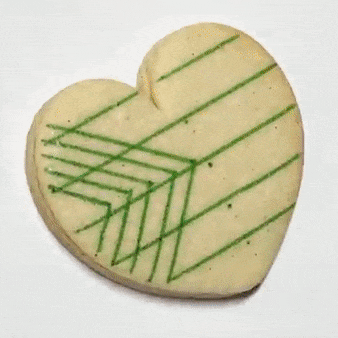
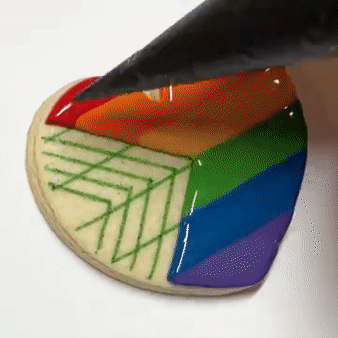
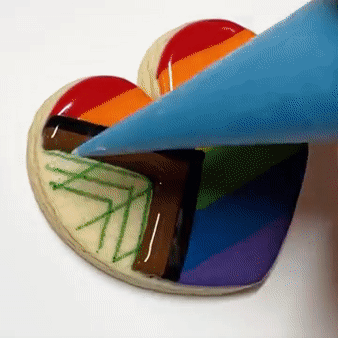
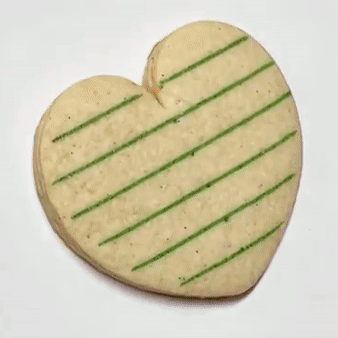


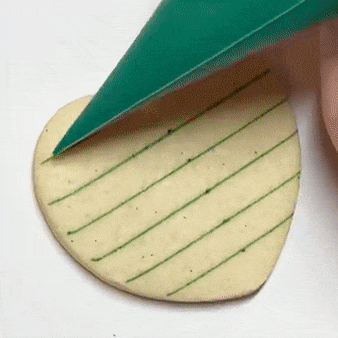
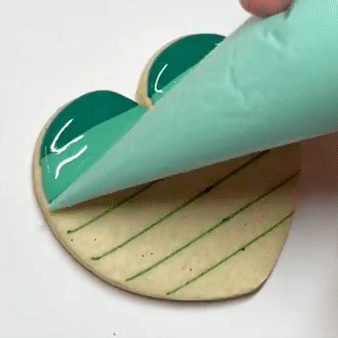
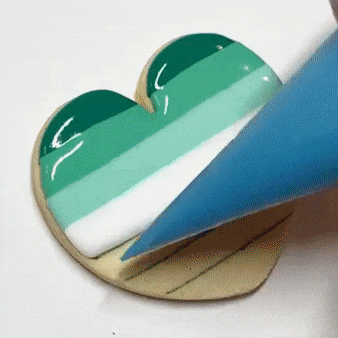
Progress, Lesbian, and Gay Pride flag cookies🏳️🌈
Pride Flags 🏳️🌈 The Graceful Baker / Youtube
3K notes
·
View notes
Text
thank you! take this with a grain of salt, since I'm femme, but from what I've read, butch identities often are based on a rejection of femininity instead of an acceptance of masculinity. Lesbians can be masculine without being butch.
"[One] can reject femininity without embracing 'masculinity' as it is so typically aligned with men" (Lucy Jones)
PSA from a lesbian:
Butch is not shorthand for masculine. Masc is shorthand for masculine.
10 notes
·
View notes
Note
~~~
I really like your response here! From my studies in linguistics and gender studies, and my personal beliefs, pronouns can be used to show aspects of an individual's identity, but it does not necessarily equate to a reflection of a specific gender or sexual identity, and presentations are also always contextual.
For example, in Hideko Abe's chapter "Lesbian Bar Talk", from Queer Japanese, there is a use of pronouns to show specific identity categories, though Japanese does use a much different system to showcase gender and sexuality, and there are also different gender and sexual identities than in (European) English-speaking culture.
And personally, I use the binary pronouns she/her as a non-binary person. These pronouns partially show my connection to femininity, but in a non-binary manner.
How are you non-binary if your pronouns are she/her? (I’m sorry, I know how ignorant I sound, but I’m trying to educate myself. Please don’t get mad or offended, even though I understand why you could get mad or offended. You don’t have to answer this ask if you don’t want to. I don’t want you to feel uncomfortable.)
Hey, thanks for reaching out. I am definitely a safe blog for asking (respectful) questions, so no worries!
First, I would say that pronouns do not necessarily indicate one's gender identity, though they can be a part of one's gender presentation. Some gay men use she/her, for example, and doing so does not make them women. Similarly, nonbinary people do not have to use they/them pronouns, and the usage of they/them pronouns does not necessarily indicate that someone is nonbinary.
Second, nonbinary people are not a homogeneous group whose gender invariably exists halfway between woman and man. Nonbinary simply means not being a part of the gender binary (i.e., neither cisgender man nor cisgender woman). It is a large umbrella term that covers many different gender identities.
In my case, I am a lesbian, my gender identity is butch, and my gender presentation is masculine. Thus, I am neither a cisgender man nor a cisgender woman. I am nonbinary. Why then, do I use she/her? Because it's what I'm used to, and it doesn't make me uncomfortable or cause any dysphoria. I'm okay with being referred to as they/them as well, but I don't prefer those pronouns any more than she/her. He/him is a little more complicated for me. Truthfully, I enjoy it when strangers refer to me as he/him because it validates my masculine presentation, but I also fear that these people are assuming that I am a man and misgendering me. Though I am aware that the usage of he/him does not imply that one is a man, we live in a cisnormative society, so I am never sure of others' intentions.
I hope this answered your question and was clear enough to understand!
9 notes
·
View notes
Text
Yes!! Gender presentation is not gender identity, and while sexuality is connected to gender identity somewhat, it is mostly based on desire, so different patterns of desire can make for some grand identities
defining traits of lesbian: be Not A Man and likes girls. that's it that's the criteria. Femme? Butch? Stone? Or none of the above? Yep! Gender nonconforming lesbians or lesbians whose gender presentation doesn't match their gender identity! Amazing! ace lesbians? valid. aro lesbians? so valid. ace-aro lesbians? you go you funky little lesbians! Yeah! Enby lesbians? They/them, he/him, xe/xer or neopronoun lesbians? Agender lesbians? Trans lesbians of all descriptions? Hell yeah! You're welcome here! Bi lesbians? Come on in!! Did I miss anyone? Feel free to add on!!
Anyway this is a lesbian positivity blog
493 notes
·
View notes
Text
Clothes Can Talk!!
No, this is not the name of a B-film from the 1950s (although, that sounds like one of those films that would be so bad it's somehow good?). Instead, this is a post about how style and other visual elements are meaningful forms of discourse in creating and maintaining identity, such as, as is in the theme of this blog, lesbian gender.
Clothing and other visual identity markers are one way to communicate one's identity to the world. Style carries a lot of meaning in association, from cultural references and subcultural ties to stereotypical roles and ideologies. As such, clothing is a powerful form of discourse in the creation and maintenance of identity, community, and practise. Through the use of style, beauty, and other visual messages, "the body becomes part of a system of signification".
Style can also be used as a way to signify the characteristics that are important to a person or a community. Through the production of visual discourses of appearance, the connected meanings can be used in the construction of space, subcultural communities, and discourses that challenge hegemony. For example, in Lucy Jones' papers, there are frequent references to the Sapphic Stompers, a UK-based butch lesbian hiking group. Through the style of the members of the group and the stereotypes connected to their appearances, the group's collective identity as lesbians, feminists, hikers, and butches is projected.
Both butch (as with the Stompers) and femme are general identities that fall on a spectrum of different gender presentations and identities within the lesbian community. While these are the two most visible lesbian gender identities, there are many who do not identify as specifically femme or butch. However, similar discourses can be used to create other meanings regarding femininity, lesbianism, and the related roles, power dynamics, and agency associated with femininity, masculinity, and/or androgyny.
In the below videos by lesbian YouTubers Jessica Kellgren-Fozard and Stevie Boebi, there are a variety of different lesbian gender presentations explored and interpreted. The looks play off of different subcultures, stereotypes, and roles, and are all different expressions of femininity within lesbian gender identities.
youtube
As noted within this first video, different identity categories can be reflected through only clothing. For example, the first outfit ('dark cottagecore' - on the basis of the internet subculture of 'cottagecore') was first interpreted by Jessica as a 'Los Angeles witch' lesbian: a reflection of gender, sexual orientation, geography, and religion!
youtube
Each of the styles in these two videos is also a subversion of hegemonic and heteronormative femininity. The outfits are being worn by feminine people, commenting on different presentations of femininity, in a way that mirrors lesbian desire, power, and ideologies.
However, the meanings indexed by the visual styles are contextually based. Performance does not depend on the actions of the speaker (or wearer), but instead on the forms and meanings that exist elsewhere. If these outfits were worn in different places, or when interacting with different people, the interpretations of the styles may be different. However, in any case, these outfits will carry meaning to both the wearer, as well as the viewer.
blog references page
#lesbian#gender#style#performativity#indexicality#butch#femme#visual discourse#Youtube#lesbian gender#presentinglesbian
6 notes
·
View notes
Text
Gender, Sexuality, and Desire
Note: this post includes discussion of erotica, BDSM, and other sexual themes.
Gender and sexual identity are two concepts that are tightly linked, as are sexual identity and sexuality. However, there has been very little research done on the connection between gender and sexuality in terms of desire. As Don Kulick states in "Gay and Lesbian Language", "a focus on desire rather than 'gay' or 'lesbian' or even 'queer' language would allow analysis expanded scope to explore the role that fantasy, repression, and unconscious motivations play in linguistic interactions".
One notable study I found regarding lesbian gender, sexuality, and desire in connection to language is Morrish and Sauntson's "Discourse and identity in a corpus of lesbian erotica". Using a corpus linguistics analysis of lesbian erotica from the 1980s and 1990s, the authors track word frequency and context, and note various themes common within erotic depictions of lesbian sexual and gender identity. Some of the themes I found most noteworthy were action and reciprocity, mental eroticism (as opposed to solely physical), sensation, and power. The themes may be somewhat influenced by the nature of the source material, as from the analysis in the paper, many of the erotica included elements of BDSM, namely soft sadomasochism and dominant/submissive power play.
Within the analysis, the authors also note how the production of the above themes contrasts with heteronormative erotica of similar content. Within the lesbian corpus, there is a focus on gentleness, consent, and stereotypically feminine body parts, including the fingers, which is one of the most prevalent words in the study at over 200 instances. Feminine power is a major component of the erotica, and the data reveals a subversive version of femininity being produced, rather than an adoption of masculinity. The sexual and gender roles embodied within the texts show "butch and femme as psychological fantasy roles that allow exploration and appropriation, not merely a replication of heterosexual sexual patternings", as is the common ideology regarding lesbian identities, especially butch ones.
Considering that Queer linguistics has only recently begun looking past lexicon as the primary study of LGBTQA+ language, I look forward to the future of more studies on gender, sexuality, and desire!
blog references page
#lesbian#gender#desire#gender subversion#heteronormativity#butch#femme#lesbian gender#presentinglesbian
3 notes
·
View notes
Text
"stereotypical lesbian identity, such as butchness, is not about masculinity. It is about a reworking of the category ‘woman’ and often involves the rejection of overtly feminine styles" (Lucy Jones (2014), pg. 183)
blog references page
1 note
·
View note
Text
Ooh, this is really interesting! I don't know very much about Thai culture, but these lesbian genders seem both similar and very different to the Western identities of butch, femme, etc. as well as the Japanese identities of rezu, ō-nabe, and other feminine-attracted gender presentations described by Hideko Abe in Queer Japanese.
Fifth Keyword Blog Post: Toms, Dees, and the Social Construction of Femininity and Masculinity
"They say to be born a woman is to pay for sins in a past life, so to be a woman who loves women is punishment for even greater sins."
This was said by an anonymous woman in the documentary Visible Silence: The Unspoken Lives of Thai Tomboys, Ladies, and Lesbians. To be a lesbian in Thailand is an isolating experience. Thailand is built around a culture of silence-- a sort of don't ask, don't tell policy. Because of this, gender presentation has played a big role in the identifying of lesbians to other lesbians. Within the lesbian community in Thailand, terms have been made for lesbians to identify as. These terms function a lot like how butch and femme do here in the US. A tom is the equivalent of a butch; someone who is confident, who leans towards a more masculine presentation, someone who will fall into the traditional role of the man in the relationship. A dee is the equivalent of a femme. A dee functions more like the woman in the relationship; she will often dress more traditionally feminine than the butch, and will be more docile, less assertive. These traditional gender roles of tom and dee play into the social construct of femininity and masculinity.
To some degree, I believe these gender identifiers are culturally necessary. Lesbians are often able to identify other lesbians, and many of the tom women told stories of how their families were also able to clock them as lesbians because of their gender presentation.
But conversely, I believe forcing people into these rigid gender roles has consequences. One woman in the documentary explained how her ex had been very conservative and strict towards her gender presentation. She did not want her tom to have long hair, but her tom wanted to have long hair. Even within these strict gender roles, there is fluctuation. There is rebellion within this binary, making it even more subversive than a woman dressing masculine. That woman argued that being tom is not how you dress, or how short your hair is. She argued that being a tom is about being confident and strong and prideful; something that traditionally most women are said to not be. It was interesting to see how even within this constructed binary, lesbians found ways to make it even more subversive, to change the meaning of masculinity, of being a tom, to what suited them. It was amazing to see. It spoke to the dimensions that all queer people have when it comes to gender and gender presentation. Even dees were finding ways to subvert the expectations thrust onto them by presenting femininely. One woman told a story of how her mother had said that it was okay that she was a lesbian, but that she still wanted her to have grandchildren. And the woman told her no, that she did not want to have children, and that that impetus should not be put onto her just because of how she dresses.
Gender is complicated. Gender presentation can make it all the more complicated. But there is no one right way to present. There is no one right way to be a lesbian either. Sometimes people don't fit so easily into feminine or masculine. One tom in the documentary mentioned the desire to just be in the middle of being a tom or a dee. Humans are multi dimensional beings, and all of those dimensions cannot be restricted to feminine or masculine.
(WC: 581)
Works Cited:
Salmon, Marguerite, et al. Visible Silence: The Unspoken Lives of Thai Tomboys, Ladies, and Lesbians, Marea Media, 2015, cpp.kanopy.com/video/visible-silence-thai-tomboys-and-ladies-who-.
8 notes
·
View notes
Text
Since the creation of this flag, it has been my go-to lesbian flag. I am so glad to have found this post about the colour meanings again!
“new” lesbian flag FAQ so I can link this in my description and you guys can stop sending me the same asks over and over
can I use the flag in my art/edits?
of course, and please tag me in them so I can see!
can I sell/buy stuff with the flag on it?
of course, but if you want to buy from Redbubble or society6 please consider checking out my stores. no obligation though, I’m just broke.
are you aphobic?
I’m not an exclusionist.
are you a terf?
absolutely fucking not, and I don’t want my flag associated with them in any way.
who is your flag for?
lesbians. all lesbians. including trans lesbians, ace lesbians, nb lesbians, he/him lesbians. lesbians.
why did you make the flag?
I was chatting with my friend and we came up with it. I posted about it because why not. it got a lot of attention, which I did not expect, but I’m rolling with it.
are you biphobic?
absolutely not, I love my bi siblings.
do I have to use your flag?
no! I’ve seen people say “you HAVE to use the new flag because blah blah blah” but that’s not me, I don’t believe that. Use the flag that resonates most with you.
what are the meanings of stripes?

7K notes
·
View notes
Text
Lesbian Language
What are the features of lesbian language? If I'm making a whole post (and, arguably, a whole blog) about the topic, there must be some pretty big differences that characterise lesbian speech, especially between different lesbian genders, right?
Nope.
There are zero (0) features that fully distinguish lesbian speech from other people's language.
Lesbian language technically doesn't exist.
So, what am I even writing about, right? Well, it is true that there are no features that make lesbian language unique. There are stereotypes about lesbian language, such as flat intonation and heavy cursing. However, any features that can be analysed as 'lesbian' or 'gay' features are also used by multiple other groups of people. For example, multiple multiple studies have been done on both gay male and lesbian intonation patterns, and none of them have been conclusive in determining specific intonation patterns as 'gay'. But, to answer my question at the beginning of this paragraph, I can write about history, and, more importantly, indexicality.
Historically, lavender linguistics - the study of Queer language - had primarily focussed on lexicon, especially in studies between approximately the 1940s and 1970s. Some specific words are used by queer people within queer communities, as quoted by Sonenschein in Kulick's "Gay and Lesbian Language", specific terminology can be used to "reflect the common interests, problems, and needs of the population", for example, in this video. This is true, that specific words may be used in Queer contexts, but words alone do not fully make a language - you need grammar, emotion, context, and so many other things to create meaning.
In more recent studies of lesbian language use, there is more of a focus on how context and indexicality are used to create lesbian language and identity, rather than just the words in use. Indexicality is defined as the ways that language is used which become connected to certain identities, such as 'lesbian', or a more specific lesbian gender, like 'butch'. The language used by people identifying as lesbians, depending on the context of its use, can index their membership with the lesbian community, or ideas important within specific lesbian communities of practise. Playing with linguistic styles, especially those which are associated with different groups can index other identities.
For example, a combination of stereotypically women's language (with the use of hypercorrect grammar or tag questions, you know?), stereotypically working-class men's speech (with features like cursing, @#$%^&!), stereotypically gay men's language (with the use of certain terminology, girl), and stereotypically lesbian language (with flat intonation) can be combined to create a form of language that is associated with lesbians and lesbian identity.
As such, associating with an identity and a specific form of language can be an active way to construct and perform gender and sexual identities, depending on the context of the person, speech community, and interaction.
blog references page
#lesbian#language#lavender linguistics#indexicality#performativity#gender#butch#femme#presentinglesbian
3 notes
·
View notes
Text
Lesbian Genders
"Wait", I may hear you ask. "Aren't lesbians, you know, women?"
Well... often yes. (Though there are some who are not women, and identify as other genders, such as non-binary, like me.) However, there are also specific gender identities that lesbians may use to describe their identities in more detail, using gender markers unique to lesbians, most notably butch and femme.
In Western popular culture, butch and femme are held in opposition to one another and are often paired in romantic or sexual couplings, seen as a sort of gay version of a heteronormative man-woman pairing. But there is so much more nuance to these personas than these assumptions of butch and femme gender identities.
Multiple authors, like Lucy Jones, Alison Eves, and Don Kulick consider butch and femme identities to be subversive critiques of the hegemonic position of heterosexuality, created in specific contexts. These identities are distinct forms of gender presentation, play, and even erotic role-play, used in the mirroring of desire, approaches to emotional connection, and other aspects of gender and sexuality. They are spectrums of feminine identity, using conscious choices of styles, gender performance, and stereotypes to build distinctly lesbian personas.
Butch identity is not necessarily the acceptance of 'masculine' ways of doing and being, but instead a rejection of the 'feminine' ways. There may be a focus on the feminine stereotypes of dress (skirts, long hair), behaviour (polite, nurturing), posture (sitting upright, taking up little room), and so on, and a distinct choice to not follow those stereotyped behaviours. Rather than being an inversion of feminine gender to masculine gender, butch is instead a projection of a specifically lesbian gender identity, distinct from both normative femininity and masculinity.
Femme identity, on the other hand, is a different projection of lesbianism as gender. Feminine stereotypes, especially regarding style and beauty, are leaned into and subverted. Presentations of femininity or hyper-femininity are used to comment and critique heteronormative standards by emphasizing certain aspects of visual appearance and behaviour, while embodying other non-normative feminine practises, namely attraction to, and relationships with, other feminine people.
Both butch and femme lesbian genders are used as, "specific patterns of sexual practice and desire, as well as being subversive re-appropriations of masculinity and femininity". However, since there are so many different ways of presenting butch, femme, or otherwise, there is a bit of an issue with homogenizing so many different identities into two very general categories. Historically, lesbian gender identities (as well as queer people in general) have been grouped together for cultural, political, and academic purposes, despite there being a huge variation in identity, presentation, and community practises. While these identities all subvert the mainstream gender and sexual structures of Western society, they all have a range of different practises, ideologies, and performances. Additionally, butch and femme are lesbian genders used by relatively few people, and lesbian as a label also does not include other cultural perspectives on gender and sexual identity. In academic studies on lesbian identity, many do not take other WLW or other gendered attraction into account (whether that be those who are not women, who experience multiple gendered attraction, or otherwise do not identify as lesbian), and also do not note the other categories which play into identity-building, such as racialisation, class, age, (dis-)ability, and so on. Keep these issues in mind when reading my posts, or others' works on lesbian gender identity.
blog references page
#lesbian#gender#butch#femme#gender performance#heteronormativity#lesbian gender#gender subversion#presentinglesbian
35 notes
·
View notes
Text
Welcome!
Welcome to my little Tumblr blog! This blog is a project for my LING 490 class Language, Gender, and Sexuality. I will be posting some analyses of lesbian gender presentation, lesbian language use and discourses, performativity, style, and other related topics. So come on in, take a seat, and happy scrolling! ^_^
4 notes
·
View notes